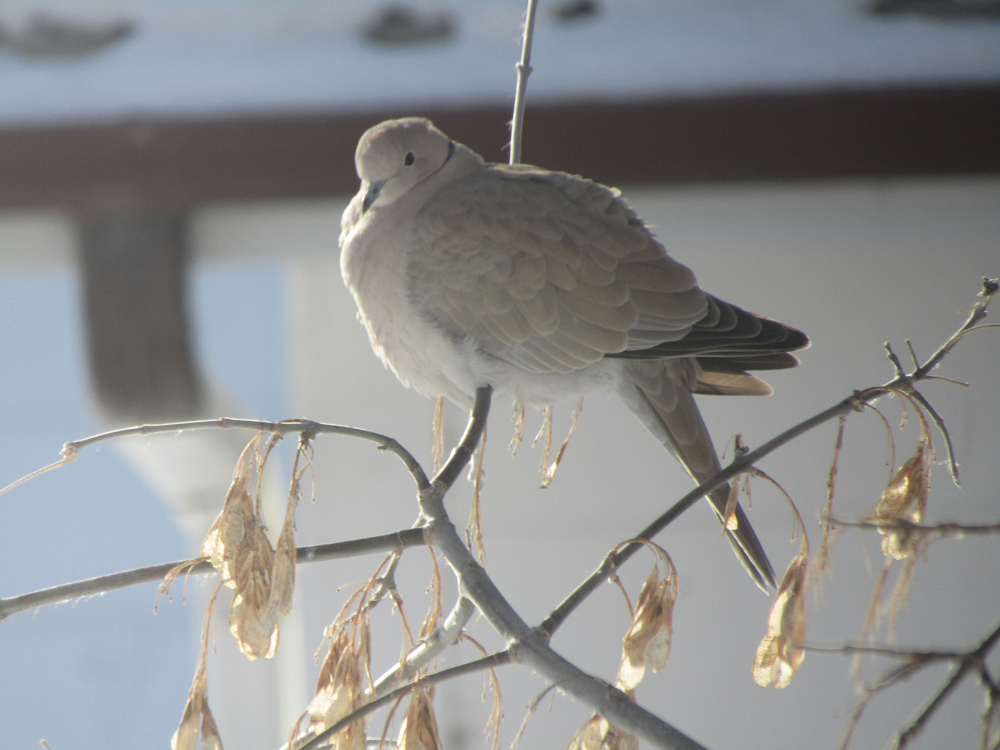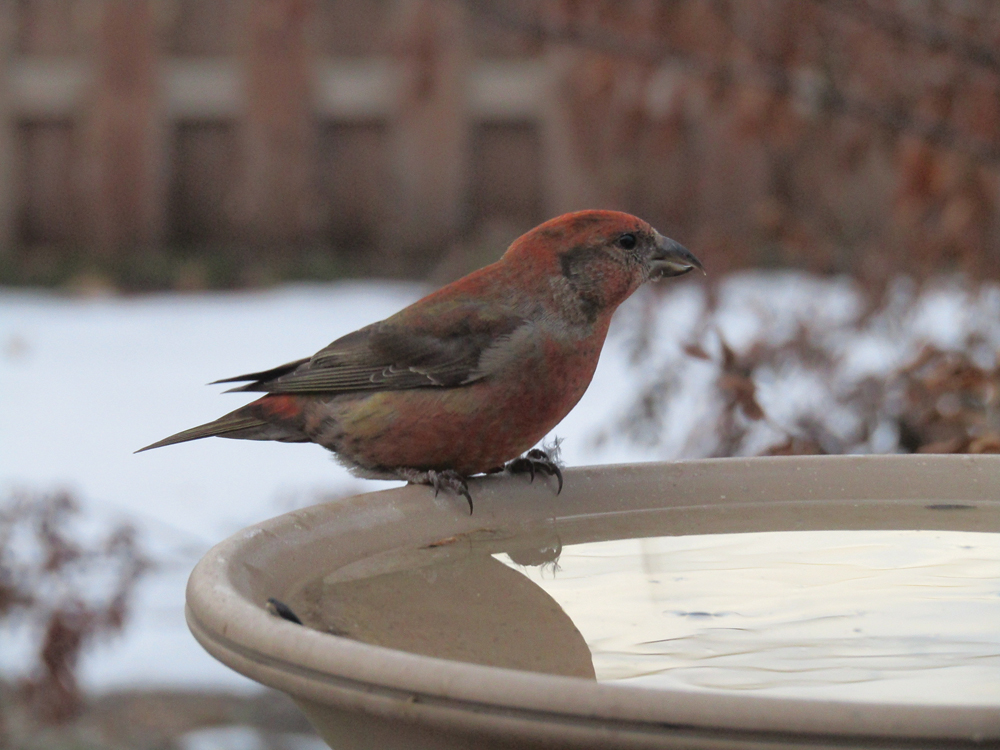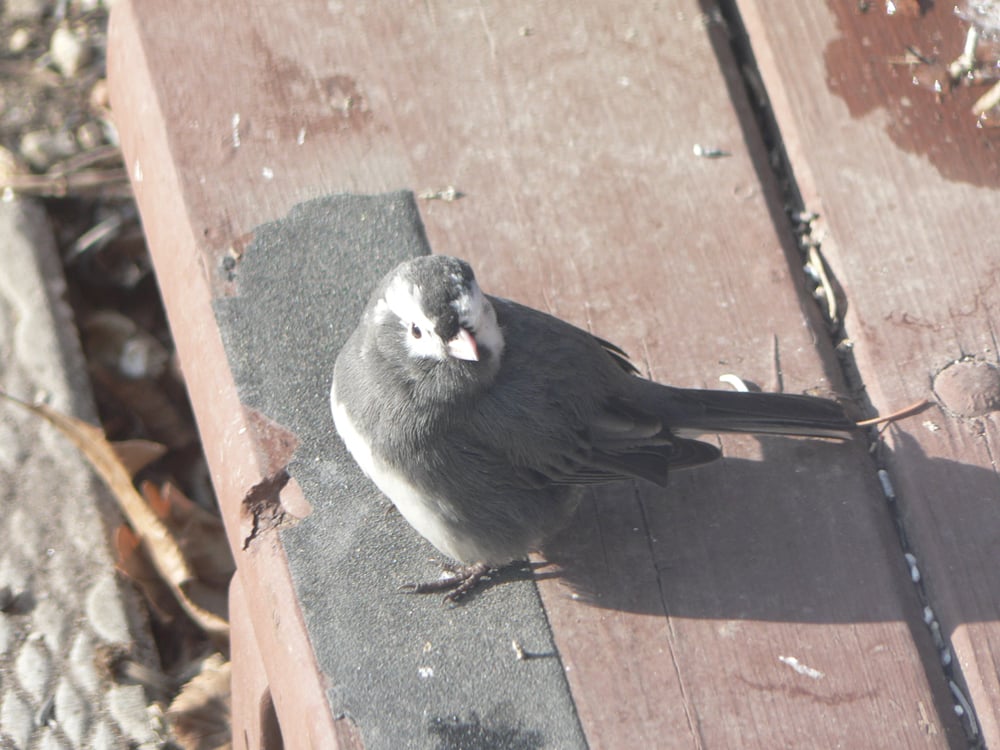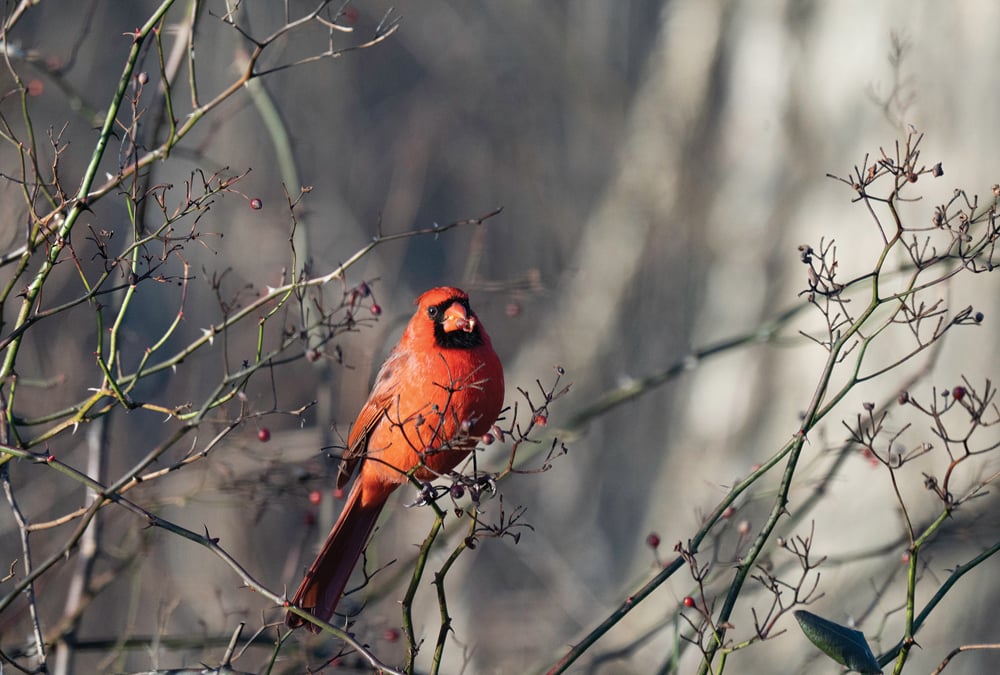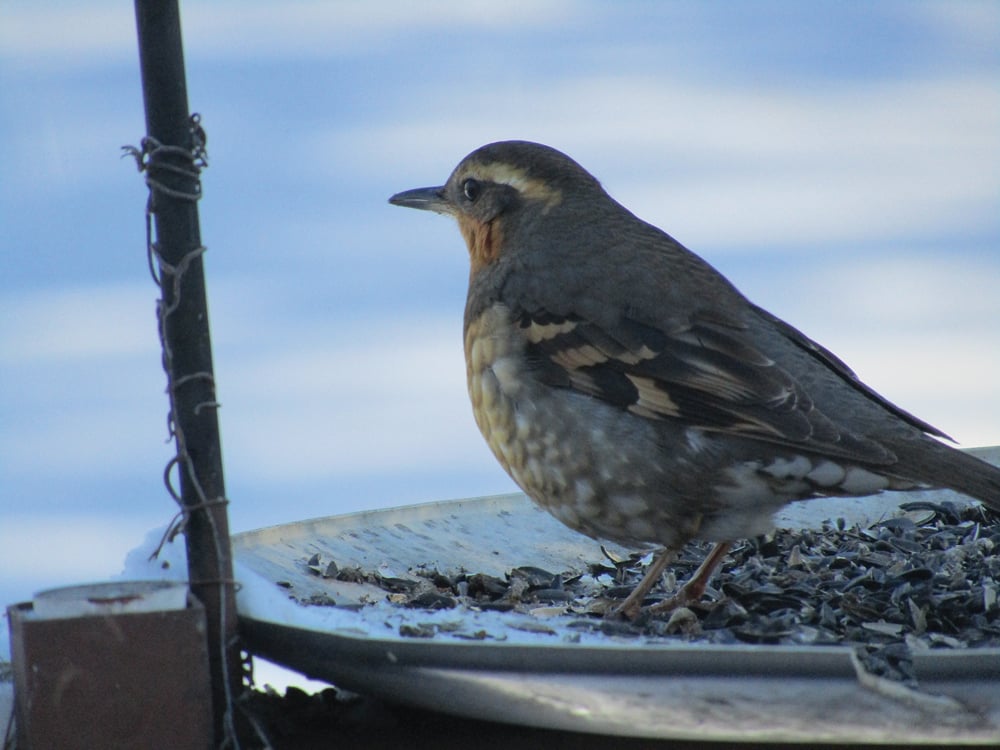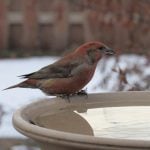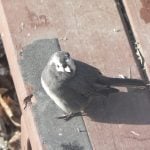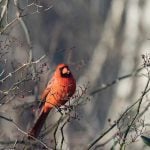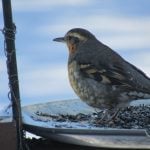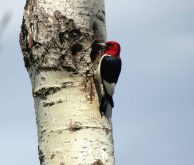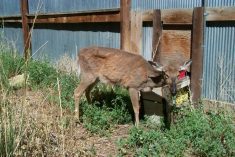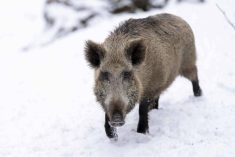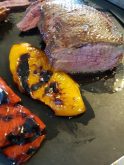Rare winter birds
Red crossbills are not an unusual sight in Manitoba, but they’ve been particularly plentiful this year.
Photo: Donna Gamache
Rare winter birds
White feathers around the eyes of a normally dark junco are indicative of leucism.
Photo: Donna Gamache
Rare winter birds
Cardinals are an exciting sight for Manitoba birders.
Photo: Joan D Squared/iStock/Getty Images
Rare winter birds
A varied thrush photographed in MacGregor in 2022.
Photo: Donna Gamache
If you’re a Manitoban who feeds birds during the winter, you may already know the normal customers at your feeder and in your yard. With careful observation, you might also see a few relatively rare birds to Manitoba or, given the mild winter so far, species that usually don’t overwinter here.
Why it matters: Chickadees aren’t the only birds that stick around when the snow comes.
One such bird is the Eurasian collared dove. Human interference is a definite factor in the bird’s presence in Manitoba. The species was brought to the Bahamas in the 1970s, where some were deliberately set free. Within a decade, they had reached southern Florida.
Read Also

Mazergroup’s Bob Mazer dies
Mazergroup’s Bob Mazer, who helped grow his family’s company into a string of farm equipment dealerships and the main dealer for New Holland machinery in Saskatchewan and Manitoba, died July 6 from cancer.
From there, they gradually spread north and west across the U.S. and are now found in Canada.
The species is a little larger than our native mourning doves. They are grey rather than the beige of our native species, with a distinctive black collar around the back of the neck.
They haven’t been noted as a serious threat to our native species, although conservation groups in other parts of North America have been watching for impacts on native populations and disease spread. They were added to the provincial birds list in 2003, according to the Manitoba Breeding Birds Atlas.
Unlike mourning doves, Eurasian collared doves do not migrate south. They spend the winter here. They are ground feeders and can be attracted if you sprinkle sunflower seeds on the ground or make a shelter where seeds are spread.
A couple of these birds frequently appear in my yard. Several regions of southern Manitoba have boasted up to 10 or 20 during the yearly Christmas bird counts.
Cardinals
The northern cardinal is also becoming a more frequent visitor in both winter and summer.
In the past, this bird was almost never seen in Manitoba at any time of the year. Historically, a smattering of cardinals would show up in an area, only to disappear after a few years, according to the Manitoba Breeding Birds Atlas.
Now, sightings are much more common. Winnipeg and Brandon residents post pictures throughout the year.
Cardinals are still infrequent enough to excite birders and attract them to spots where the birds have been sighted. I was delighted last summer to have one visit my yard in MacGregor, and equally excited to see it was still around after the first snow.
It made my day to watch it eat sunflower seeds from the bird feeder on my deck.
Woodpeckers and others
Several varieties of woodpeckers might visit the feeder if offered suet or a mixture of suet and peanut butter.
The small downy woodpecker and the similar but larger hairy woodpecker are common winter birds, while the much larger and impressive pileated woodpecker can sometimes be enticed to feeders. Another variety is slowly spreading northward into southern Manitoba: the red-bellied woodpecker.
The species doesn’t live up to its name. The red on the belly is hardly noticeable. So far, I have not seen one at my feeders, but one was spotted last winter in two nearby towns.
A rare visitor in our town last winter was a varied thrush. In Canada, this bird is shown as ranging in B.C., and “winter only” along the western coast. Whether blown this way by a storm or through some other factor, our thrush was one of several reported in Manitoba last winter. A few have also been spotted this winter.
It’s interesting to watch for birds with leucism. This is a condition in which some feathers are missing their normal pigment, turning them white. Various bird species can have this condition. In summer, it is sometimes noticed in robins and geese and in winter, juncos with the condition have been visiting my feeders for at least two years. These birds are not albino, since they have some colour and their eyes are not pink.
Common birds
Of course, unusual birds are a fraction of what you might attract to your feeders. Black-capped chickadees, woodpeckers, blue jays, white- and red-breasted nuthatches will still be the most frequent visitors. Somewhat less common are pine siskins, juncos, pine and evening grosbeaks, common redpolls and crossbills.
This winter, red crossbills have been common at many southern Manitoba feeders, so watch for them. The females, despite their name, actually have a yellow tinge. Siskins are also visiting this winter in large numbers.
Feed of choice
Black oil sunflower seeds are the favourite of nearly all these species, as well as suet or a suet-peanut butter mixture. Mixed bird seed is cheaper, but a lot of it goes to waste.
If you are interested in watching some of these unusual winter birds, check out a birding website such as ebird.org and look under “rare bird alerts.” For Manitoba sightings and photos, visit “Manitoba Birding – Bird & Wildlife Photography” on Facebook. Exact locations are sometimes not given to avoid too many visitors.
Bird feeding can be an interesting winter pastime, especially for those who spend much time indoors. If you see some of these rarer visitors, it can even prove exciting.





